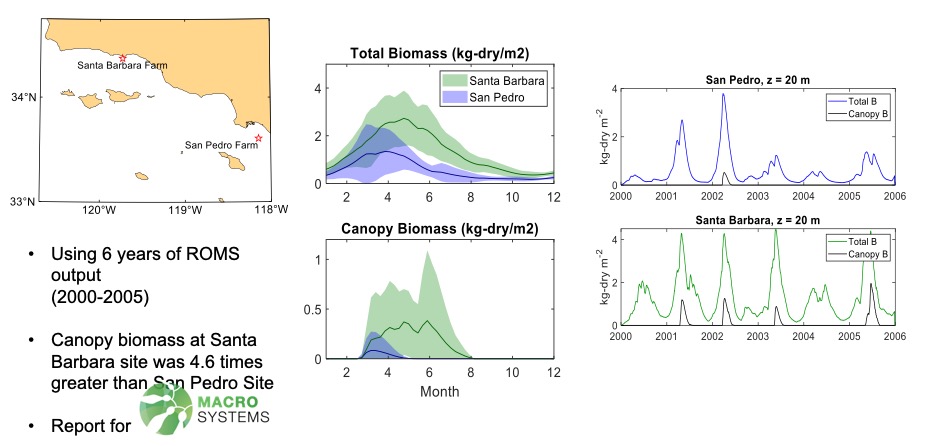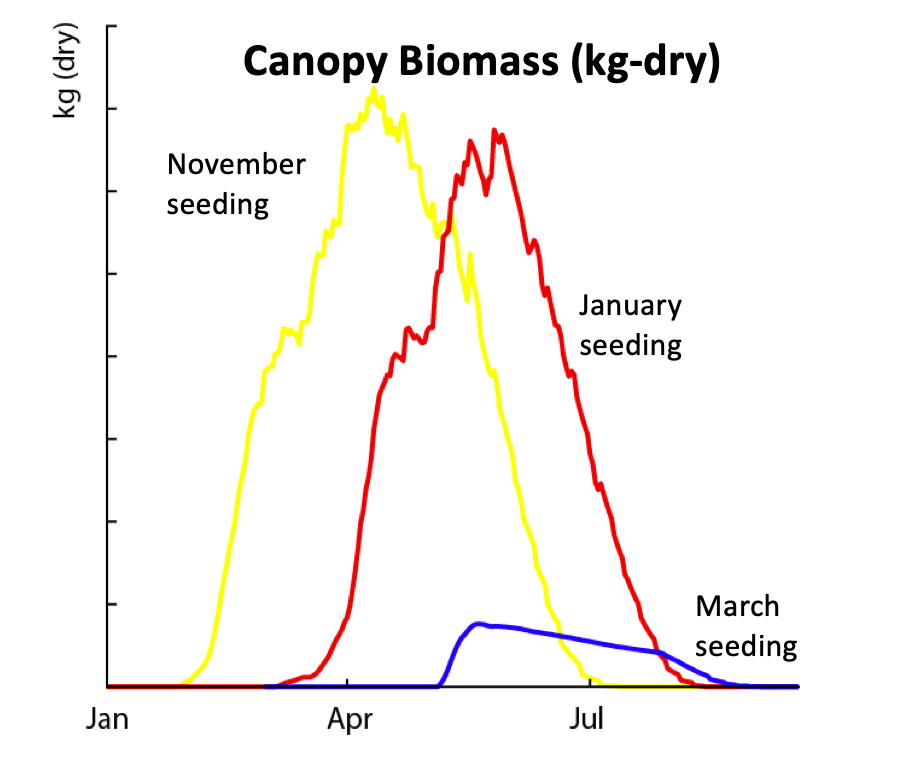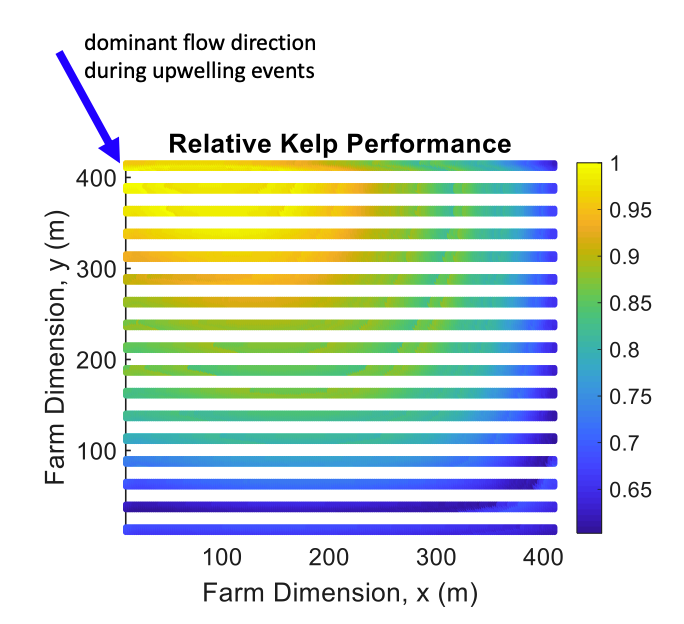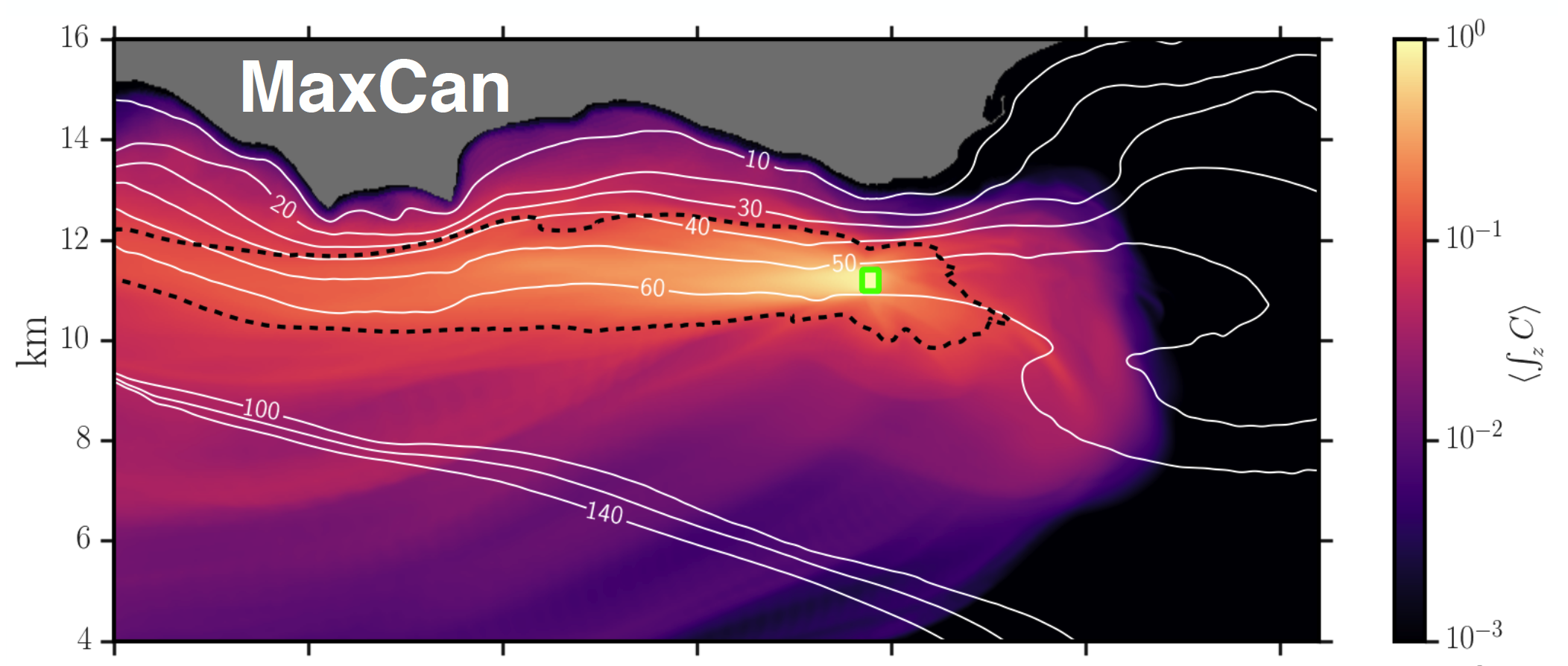
SITING OFFSHORE FARMS
We are using MACMODS to help identify optimal areas for offshore farming. Working with NOAA and UC Irvine Masters of Software Engineering students we have created a Seaweed Farming Index tool that estimates the optimal places for offshore cultivation in Southern CA waters for Macrocystis pyrifera. The tool is currently in beta-testing and we’d love to hear your feedback.
Using products like this we can compare the relative farming potential at multiple sites over several years. The below analysis was completed as part of a report for MacroSystems.
TESTING FARM OPERATIONAL DECISIONS
We are using MACMODS to test the importance of farm operational decisions such as the influence of seeding date on Macrocystis pyrifera yield.
We can also test the influence of cultivation depth on kelp growth. Here, results from a simulation of a Macrocystis farm off on the San Pedro Shelf show that a shallower cultivation depth produces more canopy biomass earlier in the year, but the growing season is shorter. As cultivation depth increases the season lasts longer. Total integrated biomass is nearly the same regardless of cultivation depth.
RESOLVING WITHIN-FARM PERFORMANCE
We are using MACMODS to help optimize the design of offshore macroalgae farms.

The figure above shows a Large Eddy Simulation flow field within a Macrocystis pyrifera farm where the kelp biomass is arranged on 500 m longlines. Mean flow is from left to right and our results show flow accelerating in the space between longlines (brighter yellow patches) and slowing down within the kelp lines (blue patches) due to canopy drag.
Resolving the within-farm flow field enables us to examine kelp performance differences within a farm unit. The below image shows relative kelp biomass over a growing season. Yellow is where kelp is performing the best and blue areas indicate kelp is performing less well.
FARM PARTNERS
Ocean Rainforest, Inc.
Farmed Species: Macrocystis pyrifera
Location: Southern California Bight
Ocean Era
Farmed Species: Gracilaria, Sargassum, Ulva
Location: Hawaii
Tropical Seaweeds
Farmed Species: Eucheuma
Location: Puerto Rico, Florida, Belize






